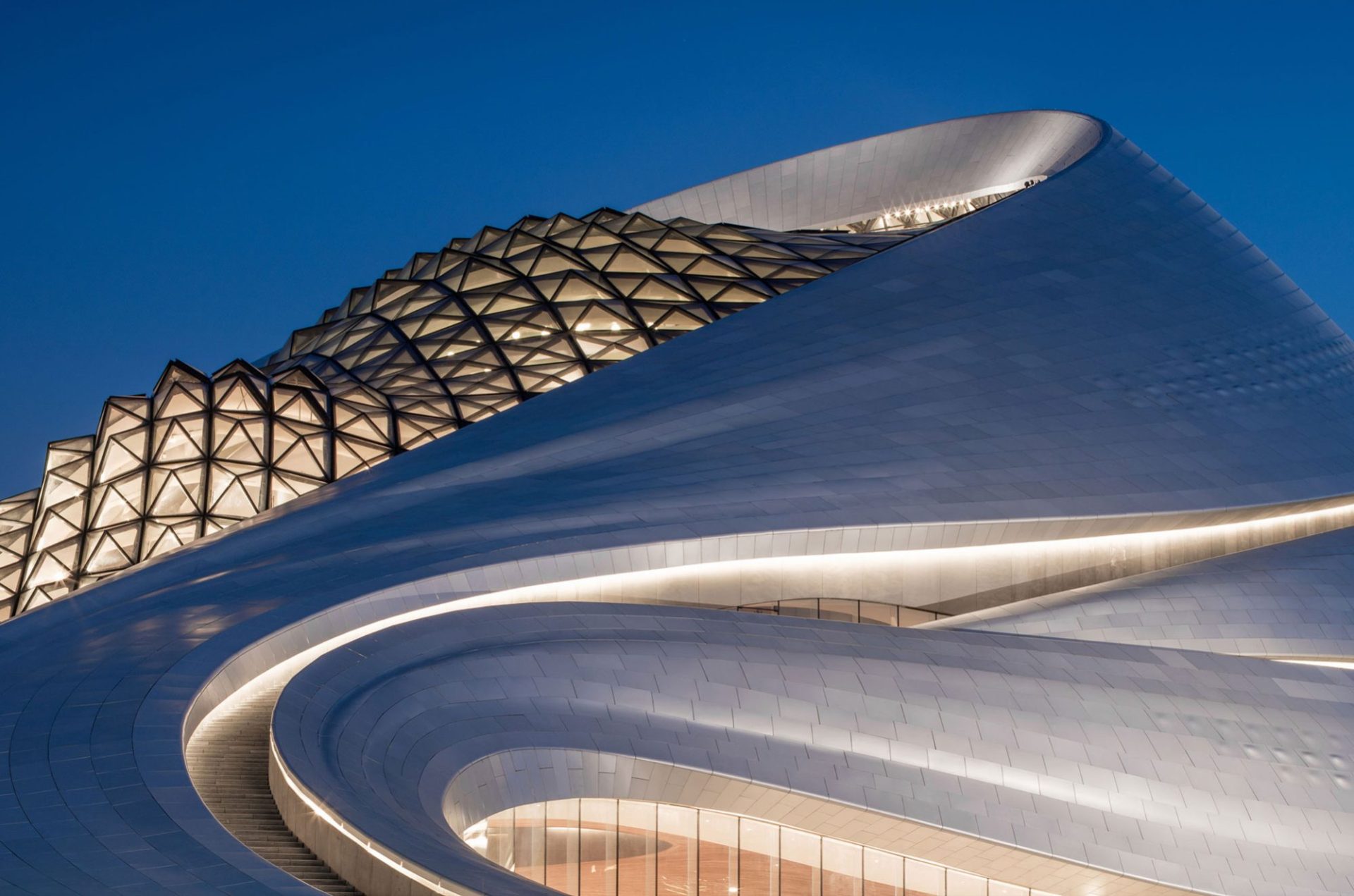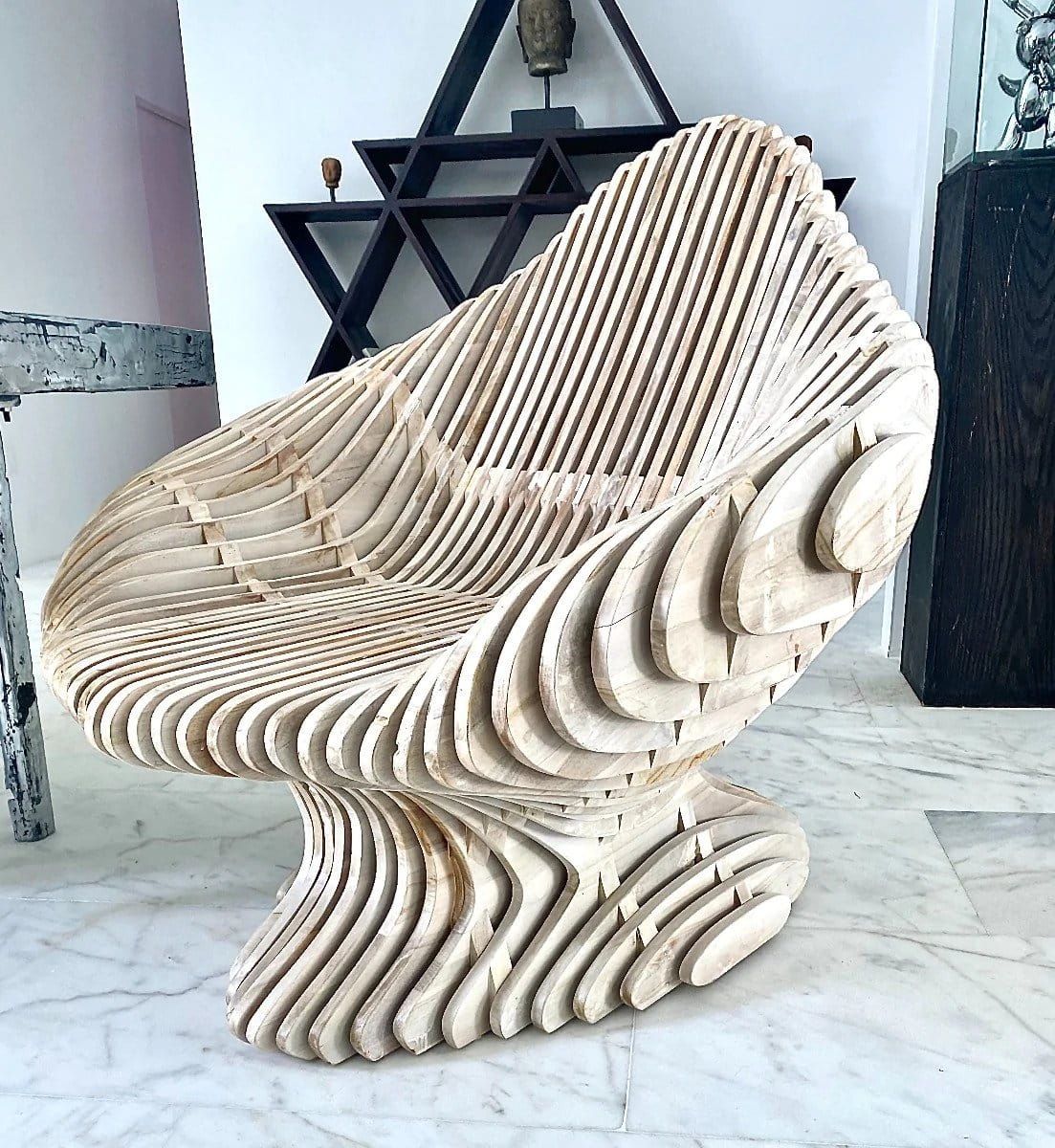What is Parametricism?
Patrik Schumacher’s 2008 coin, parametrism, is an avant-garde architectural style modeled after postmodern and modern methods. It uses computers, programs, and algorithms to modify designs. It is rooted in parametric design and makes use of parametric equations. Beyond architecture, this style also affects furniture, interior design, and urban planning. It creates a self-referential system where changes to one element have an impact on other elements; this process is known as autopoiesis. It began in the early 1990s and developed together with digital technology and computational procedures, with roots in Frei Otto’s work.
What is Minimalism?

In design and architecture, minimalism entails distilling elements to their most basic forms. It first appeared in London and New York in the late 1980s and has an emphasis on simplicity. White accents, chilly lighting, and roomy arrangements with little furniture are frequently used. Relying on the principle of “Less is more,” minimalist architects like Ludwig Mies van der Rohe arrange elements to achieve a modern and urban idea of ‘simple living’. The movement values natural light, space, and materials and takes into account spiritual and unseen qualities in addition to aesthetic considerations. Influenced by Zen philosophy, simplicity, and the aesthetic concepts of Ma and wabi-sabi, minimalism is influenced by Japanese tradition. Japanese architects who prioritize materials, simple geometry, and interaction with the natural world, such as Tadao Ando and Kazuyo Sejima, embrace minimalist ideas. British architect John Pawson and Spanish architect Alberto Campo Baeza also contribute to the minimalist movement, prioritizing simplicity, light, and essential forms in their designs.
Minimalism vs Parametricism: A Showdown of the Aesthetics
While both Parametricism and Minimalism have significantly developed in the fields of architecture and design, given below are the chief differences that separate one from the other:
1. Style
Minimalism: The main themes of minimalist design are often utility and simplicity. It seeks to remove extraneous components and parts in favor of what is necessary to achieve the goal of the design. To improve an object or space’s overall functionality, pragmatism, simple layouts, and clean lines are given priority.

Parametricism: Modern and organic forms that transcend conventional geometric shapes are frequently embraced in parametric design. Designers can produce complicated, flowing, non-linear structures with a sense of fluidity by making use of algorithms.

2. Colour Pallete
Minimalism: A limited color scheme, dominated by neutral tones like white, black, gray, and earthy hues, is a common feature of minimalist design. This subdued use of color prevents visual clutter and adds to a feeling of tranquility. The focus lies in the deliberate use of color to produce a visually pleasing and well-balanced experience.
Parametricism: rather than sticking to the muted tones associated with minimalism, parametric design frequently experiments with a bright and varied color scheme. The complex nature of the parametric forms can be highlighted by the use of vivid and contrasting colors. The design’s overall visual impact is enhanced by the frequently dramatic color selections.

3. Space
Minimalism: Spatial awareness is heavily emphasized in minimalist design. This entails thoughtfully planning how to arrange and position objects in a room to foster an air of openness and peace. In order to maximize the total visual effect and remove any superfluous distractions from the observer, negative space is deliberately employed.

Parametricism: Through the creation of flexible and adaptable environments, parametric design redefines spatial configurations. Spatial layouts can be optimized depending on particular parameters and requirements by utilizing algorithms. An environment that is dynamic and responsive can be created when spaces flow into one another and the lines between internal and outside space become less distinct.
4. Lighting
Minimalism: An essential component of minimalist design is lighting. Carefully considered lighting design is used to highlight important components and improve the overall atmosphere. In order to create a light and airy ambiance, natural light is frequently maximized. Simple, inconspicuous artificial lighting complements the whole design without drawing attention to itself.
Parametricism: Lighting in parametric design is often dynamic and interactive. Computational processes can be used to create lighting systems that respond to environmental conditions or user interactions. Dynamic lighting enhances the visual impact of parametric forms, emphasizing their intricate details and creating a captivating atmosphere.

5. Material
Minimalism: The use of high-quality materials is a hallmark of minimalist design. Whether in architecture, furniture, or product design, minimalism often involves selecting materials for their intrinsic beauty and durability. Simple and unadorned surfaces showcase the natural qualities of these materials, reinforcing the minimalist aesthetic.
Parametricism: Parametric design often incorporates innovative and high-tech materials that complement the complexity of the forms. Materials may include advanced composites, 3D-printed components, or other cutting-edge materials that allow for the realization of intricate and precise geometries. The choice of materials is integral to achieving the desired aesthetic and structural integrity.
Minimalism and Parametricism: The Commonalities
The global influence of parametricism and minimalism is evident in their recognition and practice internationally. These designs contribute to the evolution of a global aesthetic, reflecting the shared principles that resonate across borders and cultures. Following are some areas that connect the two designs:
1. Form: Despite having different ends, parametrism and minimalism share essential design concepts that have influenced modern design. One fundamental link between parametricism and minimalism is the emphasis on form. While minimalism intentionally reduces for simplicity, parametricism frequently uses computational techniques to create complex, dynamic forms. Both styles emphasize the crucial importance of the selected shape in design, impacting the total visual impression, despite their disparate aesthetic expressions.

2. Detailing: The elimination of superfluous information is another similarity. Whereas minimalism purposefully reduces, removes non-essential components, parametrism accomplishes this by using computer analyses to identify key aspects. Both strategies are dedicated to eliminating extraneous details in order to create a visual clarity that amplifies the impact of the design.

3. Quality Material: Parametricism and minimalism both prioritize attention to materials. While minimalism favors the use of premium materials in their most unadulterated forms, parametricism investigates cutting-edge materials and pushes the limits of technical breakthroughs. The common element connecting these styles is the recognition of the significance of material things.

4. Interior design: Their impact on interior design goes beyond architecture. Interior spaces with parametric designs tend to be lively and flowing, whereas minimalist interiors are calm and uncluttered. Both aesthetics have had a profound effect on interior design, helping to shape modern living spaces with their unique looks.
References:
- Wikipedia- Minimalism
- Wikipedia- Parametricism
Read Also:
Reaching for the Sky: Exploring the Pinnacles of Urban Architecture





